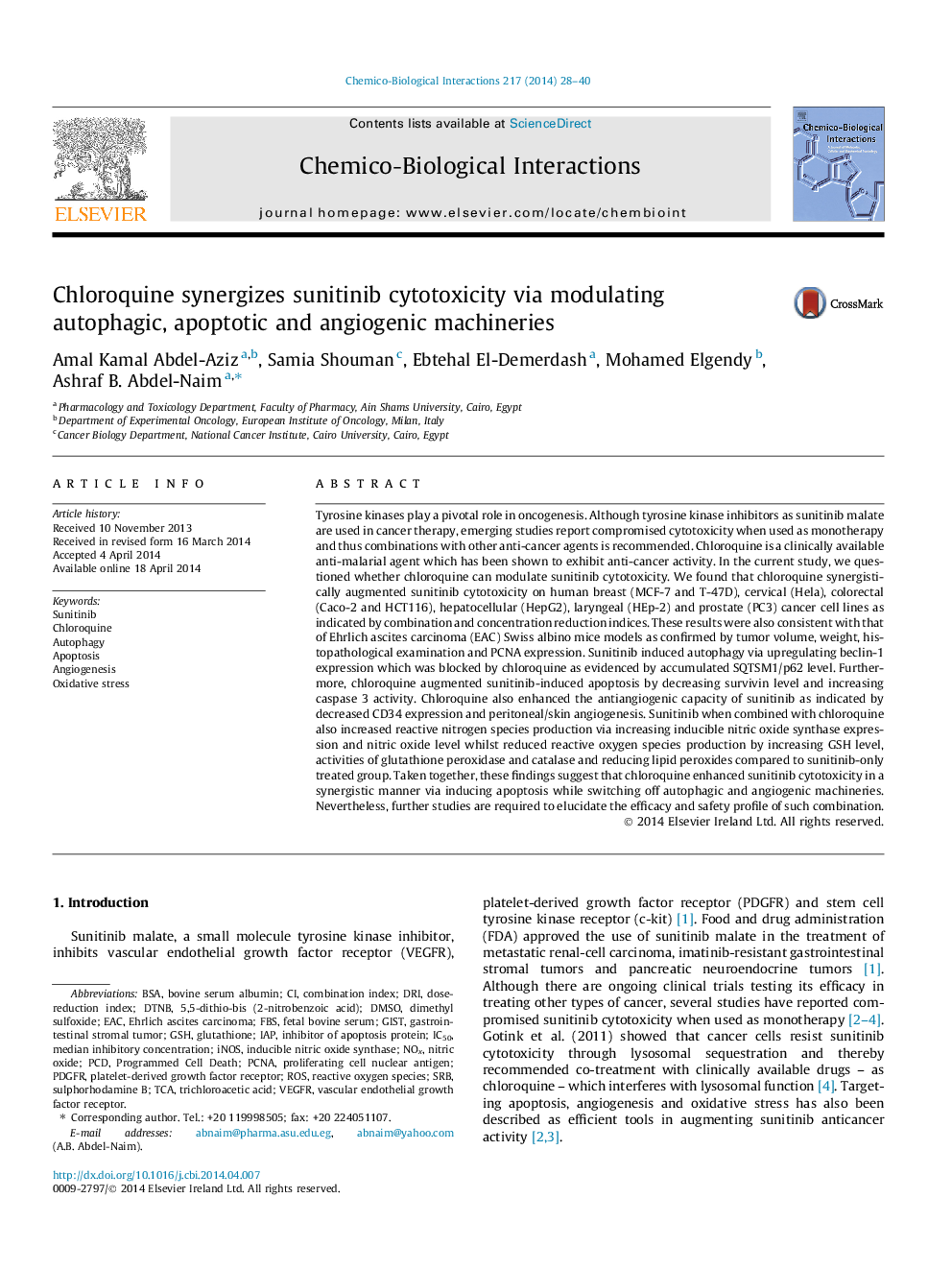| Article ID | Journal | Published Year | Pages | File Type |
|---|---|---|---|---|
| 5848056 | Chemico-Biological Interactions | 2014 | 13 Pages |
Abstract
Tyrosine kinases play a pivotal role in oncogenesis. Although tyrosine kinase inhibitors as sunitinib malate are used in cancer therapy, emerging studies report compromised cytotoxicity when used as monotherapy and thus combinations with other anti-cancer agents is recommended. Chloroquine is a clinically available anti-malarial agent which has been shown to exhibit anti-cancer activity. In the current study, we questioned whether chloroquine can modulate sunitinib cytotoxicity. We found that chloroquine synergistically augmented sunitinib cytotoxicity on human breast (MCF-7 and T-47D), cervical (Hela), colorectal (Caco-2 and HCT116), hepatocellular (HepG2), laryngeal (HEp-2) and prostate (PC3) cancer cell lines as indicated by combination and concentration reduction indices. These results were also consistent with that of Ehrlich ascites carcinoma (EAC) Swiss albino mice models as confirmed by tumor volume, weight, histopathological examination and PCNA expression. Sunitinib induced autophagy via upregulating beclin-1 expression which was blocked by chloroquine as evidenced by accumulated SQTSM1/p62 level. Furthermore, chloroquine augmented sunitinib-induced apoptosis by decreasing survivin level and increasing caspase 3 activity. Chloroquine also enhanced the antiangiogenic capacity of sunitinib as indicated by decreased CD34 expression and peritoneal/skin angiogenesis. Sunitinib when combined with chloroquine also increased reactive nitrogen species production via increasing inducible nitric oxide synthase expression and nitric oxide level whilst reduced reactive oxygen species production by increasing GSH level, activities of glutathione peroxidase and catalase and reducing lipid peroxides compared to sunitinib-only treated group. Taken together, these findings suggest that chloroquine enhanced sunitinib cytotoxicity in a synergistic manner via inducing apoptosis while switching off autophagic and angiogenic machineries. Nevertheless, further studies are required to elucidate the efficacy and safety profile of such combination.
Keywords
SRBPDGFRVEGFRPCDIAPiNOSDTNBDose-reduction indexGSHTCASulphorhodamine BIC50DRIPCNAEACFBSBSADMSOEhrlich ascites carcinomaNOxROSbovine serum albuminProliferating Cell Nuclear AntigenAngiogenesisAutophagytrichloroacetic acidOxidative stressGastrointestinal stromal tumorApoptosisDimethyl sulfoxideSunitinibfetal bovine seruminducible nitric oxide synthasecombination indexmedian inhibitory concentrationProgrammed cell deathGistinhibitor of apoptosis proteinNitric oxideChloroquineGlutathioneReactive oxygen speciesplatelet-derived growth factor receptorvascular endothelial growth factor receptor
Related Topics
Life Sciences
Environmental Science
Health, Toxicology and Mutagenesis
Authors
Amal Kamal Abdel-Aziz, Samia Shouman, Ebtehal El-Demerdash, Mohamed Elgendy, Ashraf B. Abdel-Naim,
